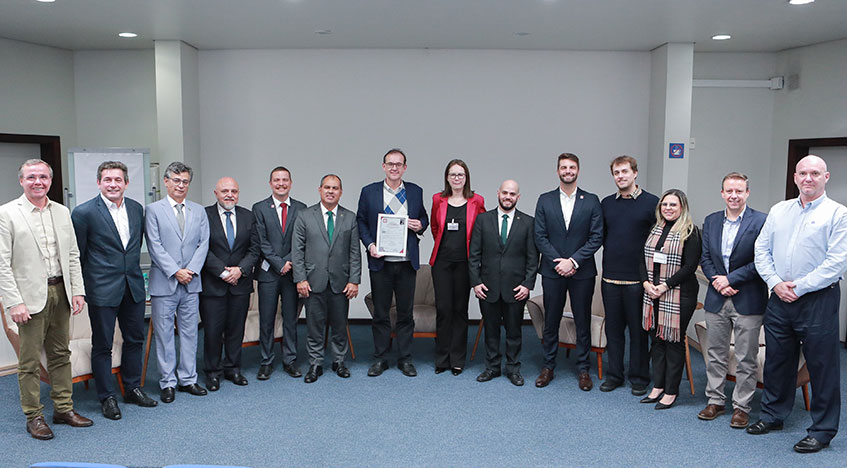Installed along 916 km in Rio Grande do Sul, from Chui in the Far South to Torres in the North Coast, 10 WEMOB (WEG Electric Mobility) Station charging points were set up with a capacity of 60 kW in direct current (DC) and 43 kW in alternating current (AC). This initiative is part of the research project "Mercosur Electric Route - Support for Development and Management for Intelligent Mobility," approved by ANEEL, with funding from CEEE Grupo Equatorial Energia and execution by the Federal University of Santa Maria (UFSM).
The charging points are located in Santa Vitória do Palmar/Chuí, Santa Vitória do Palmar/Curral Alto, Jaguarão, Rio Grande, Pelotas, Cristal, Barra do Ribeiro, Eldorado do Sul, Osório, and Torres. The route will allow, for example, electric car travel to Uruguay, which already has a network of charging stations. From the neighboring country, it will also be possible to reach Buenos Aires, Argentina, by crossing the Río de la Plata estuary. Additionally, there is connectivity with Paraguay, passing through existing charging stations in Centrais Elétricas de Santa Catarina (Celesc) and Companhia Paranaense de Energia (Copel).
The WEMOB line offers Wi-Fi, Ethernet, or 4G connectivity, featuring a high-resolution screen and signaling LEDs. With online connectivity via the Open Charge Point Protocol (OCPP) and energy measurement functions, it provides a more efficient and integrated charging experience for electric vehicle users.
From a technical perspective, WEMOB stations can perform fast charges in 60 minutes. On average, semi-fast charging stations take 4 to 8 hours, and slow stations may take 8 to 12 hours. Besides the charging station's power, other factors influencing the charging time include battery capacity, ambient temperature, among others. Therefore, charging stations are being installed every 100 km to provide more safety and peace of mind for travelers.
One of the major challenges for installing fast and ultra-fast charging stations lies in the electric power infrastructure to support the equipment's power, requiring a large amount of energy in a short period. This is where Battery Energy Storage Systems (BESS) come into play.
The project also included the installation of a BESS near the Osório Station, also developed, manufactured, and supplied by WEG, with a power of 100 kW and an energy capacity of 215 kWh, enough to recharge several electric vehicles, even without the availability of grid power, ensuring adequate infrastructure, flexibility, and allowing joint application studies of BESS and charging stations.
In addition to enabling charging for those already using electric vehicles and contributing to the development of a reliable charging infrastructure, the charging points have a sustainable concept in their execution. Built with solar carports, also supplied by WEG with a structure composed of photovoltaic panels for solar energy generation, enhancing results in reducing carbon emissions.
"We want to promote the energy transition and decarbonization process. The lack of infrastructure for electric vehicle charging on Brazilian highways is one of the main obstacles to be overcome for the spread of this mode of transportation," says Sérgio Rodrigo Pereira de Araújo, Superintendent of Digital, Innovation, and Strategic Projects at Grupo Equatorial Energia.
"Our neighbor Uruguay already has a significant number of charging points, and Argentina is also developing. The Mercosur Electric Route integrates us into this scenario, as the three states in the southern region of Brazil receive many tourists from these countries, especially in the summer. We will make available an electric route, making the trip more affordable and contributing to making the region's tourism even more attractive," adds Sérgio.
"WEG is very proud of this project, not only because Brazil is accelerating the creation of charging hubs, which is vital for the rapid adoption of electric mobility, but mainly because of the convergence of modern energy transition solutions, such as solar energy, energy storage, and charging stations operating simultaneously in the same system. Soon, WEG's BESS systems can also be built using second-life battery packs, accelerating the circular reuse of products in their end-of-life phase," comments Carlos José Grillo, Managing Director of WEG Digital and Systems.



